Select the wisest projects for your property with our home renovations calculator.
There’s no place like home – but that doesn’t mean it can’t be improved upon. Whether you’re considering a move in the next few years or not, there are lots of ways to update your property, whatever your budget. But what can you do that won’t just improve your living standards, but could also help maintain or raise its value should you decide to sell in the future?
Click on your chosen area for home improvements below. Then, simply select your price bracket and discover which projects the design gurus and valuation experts recommend.
Accessories can make a bedroom feel cosy and appealing, whether it’s a traditional woollen throw, decorative hooks for hats and jewellery or professionally framed prints for your walls. Repaint tired walls in this season’s colours – soft greys provide a restful backdrop – or consider a feature wall. Drawers or dressers can be overhauled inexpensively by sanding them down and painting them in a bright shade. But opting for a neutral palette is better if you are looking to sell. As Rightmove’s Miles Shipside puts it, ‘it’s an emotional thing, so neutral colours that are inoffensive are less likely to put potential buyers off’. Install fitted wardrobes. These are space savers and give a tidy finish (presuming you bother to hang your clothes inside). Invest in a new bed with storage, which will also help keep the room looking spacious and clutter-free. Double glaze your windows if they aren’t already – this could save money on your winter heating bill and will help to block any outside noise (provided the window is shut). Get rid of that mouldy old shower curtain and put in a slick glass screen. Sort out your tiling and don’t be afraid to install tiles from floor to ceiling – it will create a feeling of height in the room. Fit a stylish towel rail and update your taps and mixers for a smart, contemporary look. Prices start from $50 but, combined, the little updates will make a big impact on the overall space. Invest in a swish new bathroom suite. ‘In today’s discerning market, a master bedroom with en-suite bathroom is “a must”, especially in a new build property with two or more bedrooms’ says Mark Wilkinson, Partner at Knight Frank. ‘It is difficult to quantify the value of adding an en-suite, but suffice to say that, provided the apartment or house has sufficient space to accommodate it, the increase to the property value should significantly outweigh the cost of building it.’ The average bathroom costs $3,000, says Which?, but that can go up exponentially, depending on what you are after. If you’re able, installing it yourself will save you money. If you don’t have the budget for a full loft conversion, you can still affordably enhance it as a storage space to help you de-clutter the rest of your home. PrimeLocation.com estimates that a storage loft conversion would cost between $700 and $1,000, including flooring, lighting and a ladder. If you’d rather full stairs to a ladder, costs range from $500-$800 for a straight flight. ‘Putting bedrooms in a loft is one of the most profitable ways of adding value’, according to Robin Chatwin from Savills, Wandsworth. According to PrimeLocation.com, a small loft conversion could cost from $15,000 to $17,000, which would include joists, two roof lights, stairs, insulation, plaster board and a second electrical fix. A medium loft conversion would cost between $18,000 and $24,000, and a large one well above $25,000. Check with your local estate agent to see if you are likely to get a return on your investment. PrimeLocation.com estimate a loft can achieve a return of around 10%.
Wallpaper can add interest, texture and warmth to a room – try it on one wall. Re-painting will clean up tired walls and can completely change the feel of a room. Add personality with a statement light or chair, as these can be removed so quirky choices won’t put off future buyers. Built-in shelves, with a deep level for your TV, Wi-Fi and cables, will keep the rest of the space looking spick and span. Make sure you play to your property’s style and strengths, and take advantage of any period features. Lawrence Hall from Zoopla advises ‘keep any home improvements fitted to the style of the property, otherwise they can look odd and totally incongruous’. Get your fireplace in order. A roaring fire is a huge winter comfort and focal point for the room, and is particularly appealing in a rural property – think downscaled Downton. If you’re lucky enough to already own one, make sure it’s in good working order – have the chimney swept annually and don’t be afraid to subtly update the façade if it’s looking tired. If you’re tempted to add one, be sure to get it installed professionally – find government approved retailers and competent fitters through HETAS. Freshen up. You can replace or repaint cupboard doors, which are the first things to get sticky and tired-looking. Switching to soft-close doors offers a neat finish, or you can replace door handles with light-reflecting glass or something quirkier to add character. Swap your tile splash back for back-painted glass or mirror, and invest in a stylish tap – smart, shiny accessories can help add a modern feel. If your kitchen table is marked, sand it down and give it a new lease of life with a coat of varnish or paint.
Replace your worktop. This varies in cost depending on the material and size required. Laminate tends to be the least expensive, while wood can add warmth and colour (though it requires extra maintenance). Corian is very durable and granite, the slick answer, is ideal if you can afford it. Miles Shipside, from Rightmove, says ‘buyers are looking for smart kitchens and bathrooms, especially as many have put all their spare cash into a deposit to buy the property. Little is left over for doing it up, so a ready to move into home is a real plus’. Update your appliances. Don’t have a dishwasher? Consider getting one. Ease of use can transform your day-to-day home life, and appeals to buyers – after all, nobody wants to spend hours over the washing up. The consumer site, Which?, estimates that updating all your kitchen appliances will cost from $1,800 if you pick budget brands. If you haven’t already, it’s also worth putting in a new, energy efficient boiler. Research by the Department of Energy and Climate Change in June 2013 found that improving energy efficiency can add up to $16,000 to your home’s value.
Install underfloor heating to keep everyone toasty year-round. This will make your home more energy efficient and, in the long run, save you money. TradeAdvisor.com say that an electric underfloor heating system will cost $295-$495 for the model plus $150-$225 for labour. A wet system is slightly more, at $595-$795 for the model, plus $300-$900 for labour – but it’ll cost less to use in the long run.
‘A kitchen is very important for saleability, but it rarely adds more than it costs,’ says Ben Pridden from Savills, York. If your kitchen is diminutive in size, then opting for bespoke, made-to-measure units will help to make the most of your space. The cost of this will vary depending on the size of your kitchen. But be sure to use every inch for storage – it will free-up space and make the room look less cluttered. According to Which?, the average spend on a new kitchen is $8,000, but you can do it for less buying from lower cost brands. Kerb appeal improves the overall look of your property and will help to attract buyers when the time comes – so repaint your front door and make sure your windows and frames are in good nick and spotlessly clean. Smart door furniture will make a home look well-kept, as will vibrant window boxes or a well-tended entrance way. According to TradeAdvisor.com, installing a driveway varies in cost depending on the material used as a covering. They estimate that, per square foot, gravel costs $3.26, blacktop/asphalt costs $3.26, concrete costs $6.52, and brick/paving costs $19.56. And be selective if you’re tempted to banish all weeds – wild flowers can look attractive, particularly in urban areas. A new garage will cost from $5,000 for a budget option, according to Which?, and up to $40,000 for a bespoke model. You can make considerable savings by building/installing it yourself, but only do so if you’re confident in achieving a good result. Go potty. Herbs, spring bulbs, and sprightly geraniums will add brightness and interest to the smallest of spaces. Repoint and paint any crumbling walls to spruce up your outdoor space. Miles Shipside of Rightmove suggests that smartening up hedges and lawns could help to attract prospective buyers if you do decide to sell.
In London, outdoor space adds considerable value to a property, so it pays to make the most of it. Lawrence Hall from Zoopla advises, ‘a clean, uncluttered, well-maintained garden and outside area can add to the value and saleability of the home. It’s well worth making the effort’.
Fence it in with smart, shutter-style fencing, or put in paving that can be used as a spot for outdoor dining. The cost of this will depend on the space you are looking to pave. But, with cheaper natural stones exported from India, there’s no need to go for the less attractive man-made versions. And an outdoor space where you can entertain is a plus side both for your own time in the property and when it comes to selling. Rightmove’s Miles Shipside says that, ‘people love the idea of barbecues in the summer, so a patio or decking is a great way for buyers to imagine themselves relaxing and living in your home, and makes them much more likely to buy’. Add space with a conservatory. Charlie Kannreuther from Savills, Chester, says, ‘it’s definitely a plus, particularly if added as an extension to the kitchen or dining room, which adds to the overall square footage of the house.’ According to TradeAdvisor.com, the average conservatory costs $6,236 but costs can rise considerably depending on style and size. You could also consider adding an outdoor office. These vary in price from $1,000 to $20,000 according to Which?, but would add an extra room to your property, which will appeal to the working-from-home brigade.

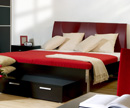
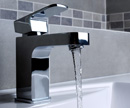
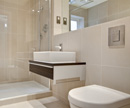

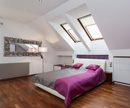


Thinking about moving? Discover top tips for selling your home
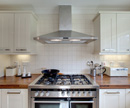
When should you do it yourself?
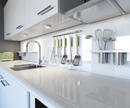

See the government research
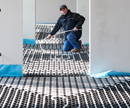
Discover how to keep toasty at winter
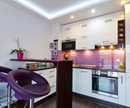
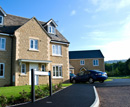
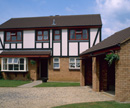

Discover how to bring the outside in
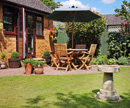
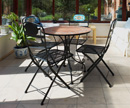
Considering building an extension?
The values stated above are based on a range of sources and are estimates only. The increased value these renovations could make to your home will depend on the age and type of property as well as location and as such these estimates should be used as a guide only. All sources and information correct at time of publication, October 2013.
This Money Matters post aims to be informative and engaging. Though it may include tips and information, it does not constitute advice and should not be used as a basis for any financial decisions. Sun Trust Group accepts no responsibility for the opinions and views of external contributors and the content of external websites included within this post. Some links may take you to another Sun Trust Group page. All information in this post was correct at date of publication.










